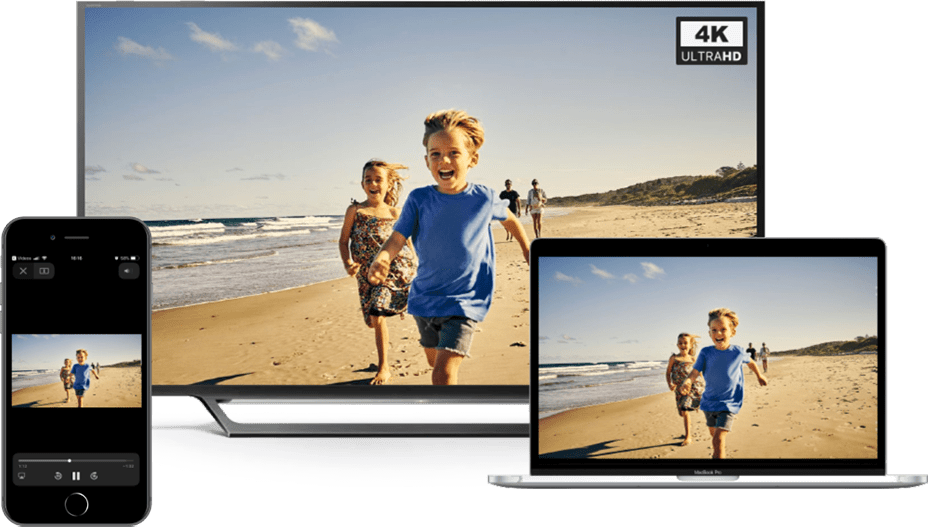
All of my relevant information was pulled from the Google Home app, a feature we missed sorely while Ouija-boarding in our passwords with the Roku and Amazon remotes. With the help of the Google Home app and Face ID on my iPhone, I was logged into my appropriate accounts quickly on the Chromecast, and I didn’t even have to type a thing on my phone (Wi-Fi passwords, account logins, or otherwise).
#Mirror from mac to fire tv for free 2017 tv#
There’s no fuss when it comes to the latter all our contenders pretty much automatically synced up with my TV’s volume and power controls.Īs far as setting up your services on the Fire TV Stick and Roku Streaming Stick+, it’s the same rigmarole you’d expect-typing in emails and passwords with a directional pad, an onerous task which the Chromecast circumvents. (Ars Technica may earn compensation for sales from links on this post through affiliate programs.)Īll three of these streaming sticks have somewhat similar setup processes that walk you through downloading and/or discovering your preferred services and linking up the streaming sticks to control your TV. But its everyday usability falls flat, which makes it worse than the Chromecast at solving the ever-threatening existential crisis of what to watch next.
#Mirror from mac to fire tv for free 2017 android#
Roku's UI is simple to read, has all the major streaming services, and does have useful tricks like AirPlay 2 support and Windows and Android screen mirroring. You ought to know what you want to watch before turning on a Roku device, as you're best served going directly into the app that has it to watch it there. It's not built to browse-or at least not very well. The Roku Streaming Stick+ doesn't suffer as much from a biased user interface as the Fire TV Stick 4K, but that's still partly due to a lackluster user interface.That said, the Fire TV Stick 4K is still fast, and it supports useful features like Dolby Vision HDR and more robust user profiles for children. While Prime Video does have a large library of movies, this leaves you with limited, sub-par options for finding new content. You can still hop over to Netflix, Hulu, HBO Max, and the like to find a specific title you're looking for, but if you're just browsing through the UI looking for something to watch, you'll be hard pressed to find something not on Prime Video. The Fire TV Stick 4K can often come across primarily as a device on which to watch Prime Video. It's not hard to use the Fire TV Stick, but it's harder to find quality content in comparison to the latest Chromecast.

As such, it was a top pick for under $50 streamers-but mainly by default.

Recently, we placed the latest Chromecast up against Amazon’s Fire TV Stick 4K and Roku’s Streaming Stick+ in some Orbital HQ testing to see which $50 streaming stick gives you the most value for your money-and which delivers the fewest headaches when you just want to kick back and watch something, maybe even something in 4K. So the 2020 Chromecast seems like it could be the perfect low-cost yet highly compatible cross between a streaming stick (to watch content from your phone) and a remote-controlled set-top box (to control apps like Netflix, Prime Video, and HBO Max via remote).The only way to know for sure, however, was to put in a little more screen time. It might even be an attractive alternative to the $179 Apple TV 4K. But with the new features, Google’s latest Chromecast with Google TV finally competes with other popular, sub-$50 4K streaming sticks like the Amazon Fire TV Stick 4K and Roku Streaming Stick+. Previously, Chromecast relied entirely on streaming content from a separate device (phone, computer, tablet) to play content on your TV. One of the earlier entrants into this space, Google’s Chromecast streaming device underwent a significant transformation this generation with the addition of a remote control and a proper user interface. Further Reading Google merges Chromecast and Android TV with the “Chromecast with Google TV”


 0 kommentar(er)
0 kommentar(er)
